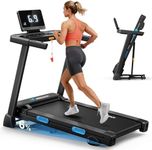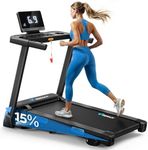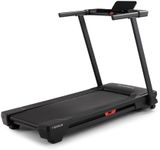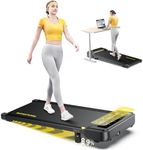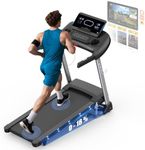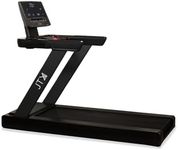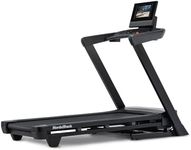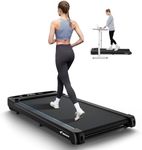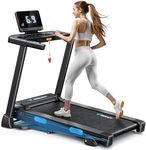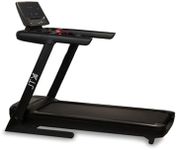Buying Guide for the Best Treadmills
When choosing a treadmill, it's important to consider your fitness goals, available space, and personal preferences. Treadmills come with a variety of features and specifications that can greatly impact your workout experience. Understanding these key specifications will help you make an informed decision and select a treadmill that best fits your needs.Motor PowerMotor power, measured in horsepower (HP), determines the treadmill's ability to handle different speeds and user weights. A stronger motor is essential for running and for users with higher body weight. Treadmills typically range from 1.5 HP to 4.0 HP. For walking, a motor with 1.5 to 2.5 HP is usually sufficient. For jogging or running, look for a motor with at least 2.5 to 3.0 HP. If you plan to use the treadmill frequently or for intense workouts, opt for a higher HP to ensure durability and performance.
Running SurfaceThe running surface, or belt size, affects your comfort and safety while using the treadmill. A larger running surface provides more room to move and is especially important for taller users or those with a longer stride. Treadmills typically offer belt sizes ranging from 16 inches to 22 inches in width and 45 inches to 60 inches in length. For walking, a smaller belt may suffice, but for running, a wider and longer belt is recommended to prevent feeling cramped and to allow for a natural stride.
Incline OptionsIncline options allow you to simulate uphill walking or running, which can enhance your workout by increasing intensity and engaging different muscle groups. Treadmills usually offer incline levels from 0% to 15%. If you want to add variety to your workouts and challenge yourself, look for a treadmill with a wide range of incline settings. For those focused on weight loss or cardiovascular fitness, incline training can be particularly beneficial.
Speed RangeThe speed range of a treadmill determines how fast you can walk or run. Most treadmills offer speeds from 0.5 mph to 12 mph. If you plan to use the treadmill for walking, a lower speed range will suffice. However, if you intend to use it for running or interval training, ensure the treadmill can reach higher speeds. Consider your current fitness level and future goals when evaluating the speed range.
CushioningCushioning refers to the shock absorption system of the treadmill, which can reduce the impact on your joints during exercise. This is particularly important for those with joint issues or those who plan to run frequently. Treadmills with good cushioning systems can provide a more comfortable workout experience and help prevent injuries. If joint health is a concern, prioritize treadmills with advanced cushioning technology.
FoldabilityFoldability is a feature that allows you to fold the treadmill for easy storage, making it ideal for those with limited space. If you live in a small apartment or plan to use the treadmill in a shared space, a foldable model can be a practical choice. Consider how often you will need to move or store the treadmill when deciding if foldability is important for you.
Console FeaturesConsole features include the display and controls on the treadmill, which can range from basic to advanced. Some treadmills offer simple displays showing speed, time, and distance, while others include touchscreens, workout programs, heart rate monitors, and connectivity options like Bluetooth or Wi-Fi. Consider what features will enhance your workout experience and keep you motivated. If you enjoy tracking your progress or need entertainment options, look for a treadmill with a more advanced console.


